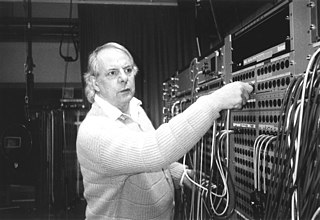
Karlheinz Stockhausen was a German composer, widely acknowledged by critics as one of the most important but also controversial composers of the 20th and early 21st centuries. He is known for his groundbreaking work in electronic music, for introducing controlled chance into serial composition, and for musical spatialization.
In music, serialism is a method of composition using series of pitches, rhythms, dynamics, timbres or other musical elements. Serialism began primarily with Arnold Schoenberg's twelve-tone technique, though some of his contemporaries were also working to establish serialism as a form of post-tonal thinking. Twelve-tone technique orders the twelve notes of the chromatic scale, forming a row or series and providing a unifying basis for a composition's melody, harmony, structural progressions, and variations. Other types of serialism also work with sets, collections of objects, but not necessarily with fixed-order series, and extend the technique to other musical dimensions, such as duration, dynamics, and timbre.

In music, tape loops are loops of magnetic tape used to create repetitive, rhythmic musical patterns or dense layers of sound when played on a tape recorder. Originating in the 1940s with the work of Pierre Schaeffer, they were used among contemporary composers of 1950s and 1960s, such as Éliane Radigue, Steve Reich, Terry Riley, and Karlheinz Stockhausen, who used them to create phase patterns, rhythms, textures, and timbres. Popular music authors of 1960s and 1970s, particularly in psychedelic, progressive and ambient genres, used tape loops to accompany their music with innovative sound effects. In the 1980s, analog audio and tape loops with it gave way to digital audio and application of computers to generate and process sound.

Process music is music that arises from a process. It may make that process audible to the listener, or the process may be concealed.
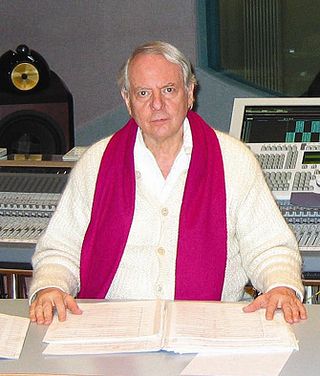
Gesang der Jünglinge is an electronic music work by Karlheinz Stockhausen. It was realized in 1955–56 at the Westdeutscher Rundfunk studio in Cologne and is Work Number 8 in the composer's catalog. The vocal parts were supplied by 12-year-old Josef Protschka. It is exactly 13 minutes, 14 seconds long.
Kontra-Punkte is a composition for ten instruments by Karlheinz Stockhausen which resolves contrasts among six instrumental timbres, as well as extremes of note values and dynamic levels, into a homogeneous ending texture. Stockhausen described it: "Counter-Points: a series of the most concealed and also the most conspicuous transformations and renewals—with no predictable end. The same thing is never heard twice. Yet there is a distinct feeling of never falling out of an unmistakable construction of the utmost homogeneity. An underlying force that holds things together—related proportions: a structure. Not the same Gestalten in a changing light. But rather this: various Gestalten in the same light, that permeates everything."
Kreuzspiel (Crossplay) is a composition by Karlheinz Stockhausen written for oboe, bass clarinet, piano and four percussionists in 1951. It is assigned the number 1/7 in the composer's catalogue of works.
Formula composition is a serially derived technique encountered principally in the music of Karlheinz Stockhausen, involving the projection, expansion, and Ausmultiplikation of either a single melody-formula, or a two- or three-voice contrapuntal construction.

Ausmultiplikation is a German term used by the composer Karlheinz Stockhausen to describe a technique in which a long note is replaced by shorter "melodic configurations, internally animated around central tones", resembling the ornamental technique of divisions in Renaissance music. Stockhausen first described this technique in connection with his "opus 1", Kontra-Punkte, composed in 1952–53, but in his later formula composition there is a related method of substituting a complete or partial formula for a single very long tone in a much slower, "more background" projection of the formula. When this is done at more than one level, the result is reminiscent of a fractal.
In music, moment form is defined as "a mosaic of moments", and, in turn, a moment is defined as a "self-contained (quasi-)independent section, set off from other sections by discontinuities".
Punctualism is a style of musical composition prevalent in Europe between 1949 and 1955 "whose structures are predominantly effected from tone to tone, without superordinate formal conceptions coming to bear". In simpler terms: "music that consists of separately formed particles—however complexly these may be composed—[is called] punctual music, as opposed to linear, or group-formed, or mass-formed music", bolding in the source). This was accomplished by assigning to each note in a composition values drawn from scales of pitch, duration, dynamics, and attack characteristics, resulting in a "stronger individualizing of separate tones". Another important factor was maintaining discrete values in all parameters of the music. Punctual dynamics, for example
mean that all dynamic degrees are fixed; one point will be linked directly to another on the chosen scale, without any intervening transition or gesture. Line-dynamics, on the other hand, involve the transitions from one given amplitude to another: crescendo, decrescendo and their combinations. This second category can be defined as a dynamic glissando, comparable to glissandi of pitch and of tempi.
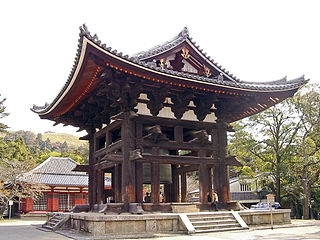
Telemusik is an electronic composition by Karlheinz Stockhausen, and is number 20 in his catalog of works.
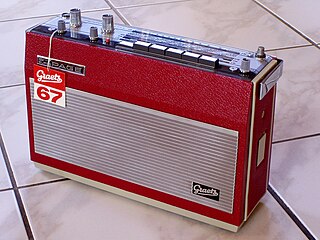
Kurzwellen, for six players with shortwave radio receivers and live electronics, is a composition by Karlheinz Stockhausen, written in 1968. It is Number 25 in the catalog of the composer's works.

Zeitmaße is a chamber-music work for five woodwinds composed in 1955–1956 by German composer Karlheinz Stockhausen; it is Number 5 in the composer's catalog. It is the first of three wind quintets written by Stockhausen, followed by Adieu für Wolfgang Sebastian Meyer (1966) and the Rotary Wind Quintet (1997), but is scored with cor anglais instead of the usual French horn of the standard quintet. Its title refers to the different ways that musical time is treated in the composition.
Prozession (Procession), for tamtam, viola, electronium, piano, microphones, filters, and potentiometers, is a composition by Karlheinz Stockhausen, written in 1967. It is Number 23 in the catalogue of the composer's works.

Pole (Poles), for two performers with shortwave radio receivers and a sound projectionist, is a composition by Karlheinz Stockhausen, written in 1970. It is Number 30 in the catalogue of the composer's works.
Unsichtbare Chöre is an eight-channel electronic-music composition by Karlheinz Stockhausen. A component part of the opera Donnerstag aus Licht, it may also be performed as an independent composition, in which form it is designated "ex 49" in the composer's catalog of works.
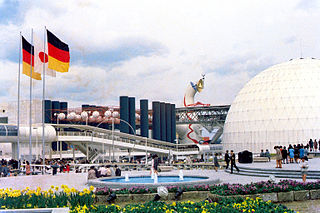
Expo, for three performers with shortwave radio receivers and a sound projectionist, is a composition by Karlheinz Stockhausen, written in 1969–70. It is Number 31 in the catalogue of the composer's works.

The Rotary Wind Quintet is a chamber music composition by Karlheinz Stockhausen, the last of his three wind quintets and is Nr. 70½ in his catalogue of works. A performance lasts about 8½ minutes.











